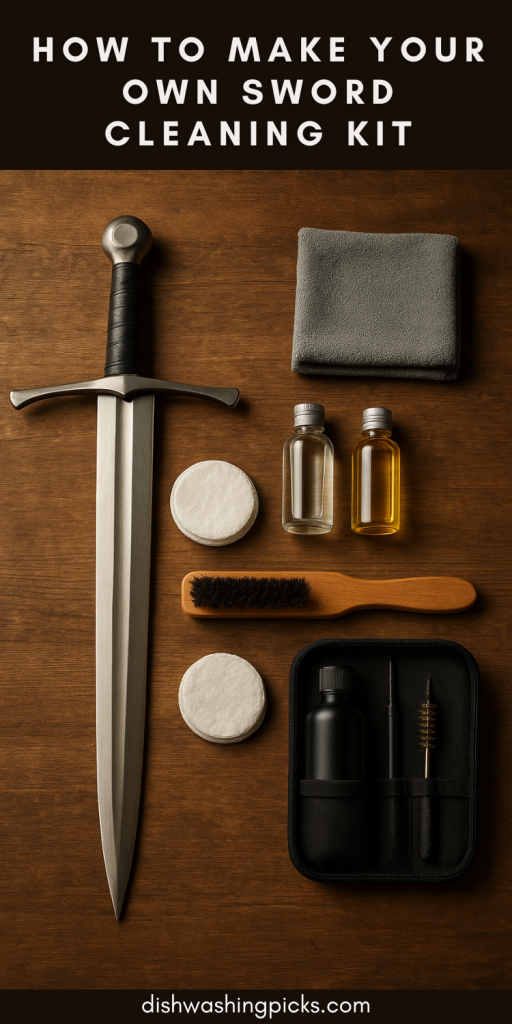
Alright, let’s be honest—most people don’t wake up in the morning thinking, “Wow, I really need to clean my sword today.” But if you’re here, chances are you actually have one (or a few) sitting around, and you know they don’t exactly take care of themselves. Whether it’s a family heirloom, a collectible katana, or something you picked up because you’ve watched one too many samurai movies (no judgment—we’ve all been there), keeping it clean is key.
Now, you could go online and buy one of those fancy sword cleaning kits, but here’s the secret: you don’t actually need to. With a few simple items you probably already have at home, you can whip up your own kit that works just as well.
Let’s break it down, step by step.
Why Bother Cleaning a Sword Anyway?
Good question. I mean, it’s not like you’re swinging it around in battle every weekend, right? But here’s the thing—swords, especially carbon steel ones, are basically magnets for moisture and oils. Even just touching the blade with your fingers can leave behind residue that causes rust or dull spots. And once rust gets cozy on a blade? It’s a pain to deal with.
So, regular cleaning keeps your sword looking sharp (literally and figuratively) and helps it last for years, even decades.
What Goes Into a DIY Sword Cleaning Kit?
Okay, let’s talk essentials. Here’s what you’ll want to gather:
- Soft cotton cloths (an old T-shirt works perfectly)
- Light machine oil or mineral oil (this keeps rust away)
- Powdered chalk or talcum powder (helps absorb oils before you reapply fresh ones)
- Rice paper or lint-free wipes (optional, but nice if you want a traditional touch)
- A small brush or soft paintbrush (for dust and powder application)
- Wooden peg remover or small mallet (only if you’ve got a katana you plan to disassemble)
And that’s really it. Nothing too exotic—no need to raid a blacksmith’s workshop or spend a fortune.
Step-by-Step: Cleaning Your Sword
- Set up your workspace: Find a clean, flat surface. Lay down a towel so the blade doesn’t scratch or slide around.
- Wipe the blade: Use your soft cloth to gently wipe away any dust, fingerprints, or old oil. Always go from the base to the tip—never back and forth like you’re polishing shoes.
- Apply powder (optional but old-school cool): If you’re going for the traditional method, dab a little powdered chalk on the blade with your cloth or brush. This pulls out moisture and leftover oil. Wipe it clean again.
- Oil it up: Put a couple drops of oil on your cloth and spread it evenly over the entire blade. You don’t want it dripping—just a thin, protective layer.
- Check the handle (tsuka, if it’s a katana): If you’re handy with disassembly, check for rust under the fittings. If not, don’t stress—just keep the outside clean and dry.
- Re-wrap and store: Once it’s clean and lightly oiled, your sword is ready to go back in its scabbard or display. Just make sure it’s not in a damp basement where rust loves to party.
A Couple of “Don’ts”
- Don’t use harsh cleaners or abrasives—your sword is not a kitchen pan.
- Don’t touch the blade after cleaning (fingerprints = rust).
- Don’t forget to clean it regularly, even if it just sits on display.
Wrapping It Up
So there you have it—your very own DIY sword cleaning kit. Simple, affordable, and honestly kind of fun once you get into the ritual of it. It’s one of those oddly satisfying chores, like polishing shoes or detailing a car.
Next time you look at your sword, instead of thinking, “Man, I should really clean that,” you’ll already have everything ready to go. Plus, there’s something undeniably cool about taking care of a blade with tools you put together yourself.
Imagine this: a hundred years from now, someone picks up your sword and says, “Wow, this thing is still in amazing condition.” And you’ll know it’s because you didn’t slack on the cleaning.
